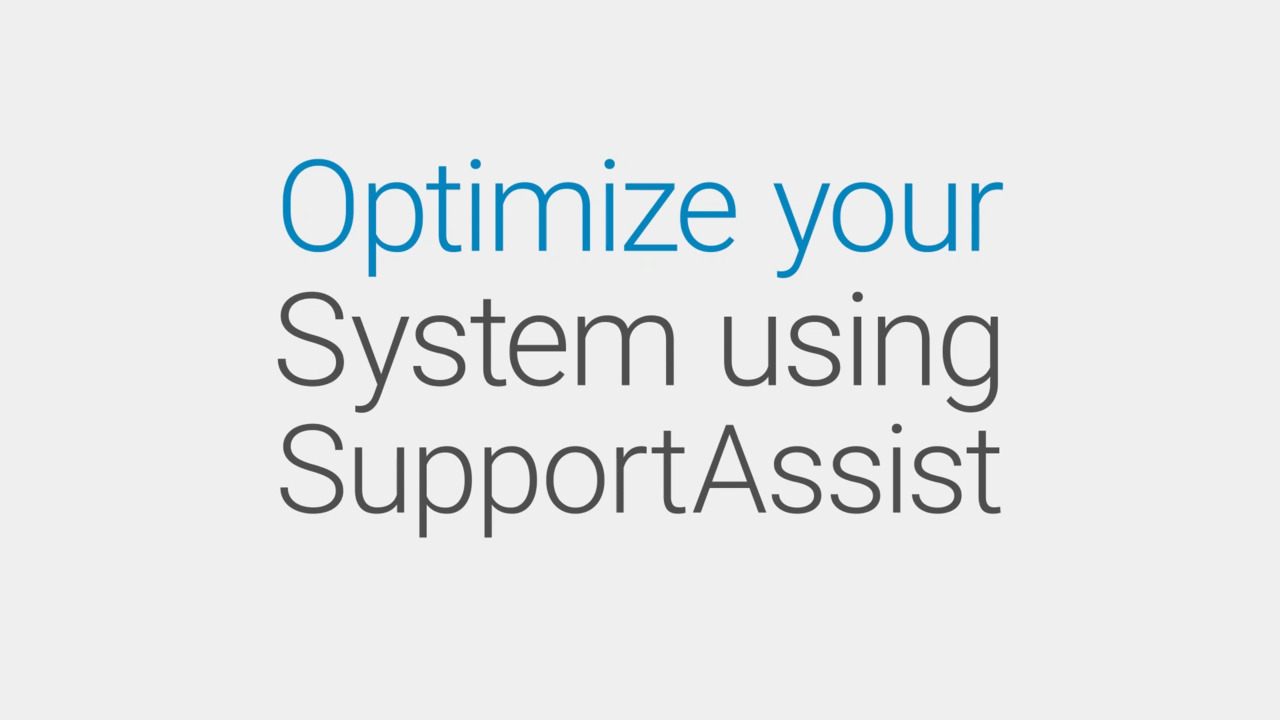Optimize Microsoft Edge to fix slow and unresponsive performance. Close unnecessary tabs or use browser extensions to manage tabs effectively.
Disable add-ons or extensions that are not essential to improve browsing speed. To clear cache and cookies, go to Settings, Privacy, and Clear browsing data or use the shortcut Ctrl+Shift+Del. Removing temporary files and unused extensions can also enhance performance.
Troubleshoot cached information and problematic extensions if the browser continues to be slow. Check for browser updates regularly to ensure optimal performance.

Credit: www.reddit.com
Why Is Microsoft Edge Slow And Unresponsive?
Microsoft Edge is a popular web browser known for its speed and performance. However, there are times when users may experience slowness and unresponsiveness while using this browser. Understanding the reasons behind these issues can help optimize Microsoft Edge for a smoother browsing experience.
Performance Issues With Multiple Open Tabs
One common reason why Microsoft Edge may become slow and unresponsive is having multiple open tabs. As you open more tabs, the browser has to allocate resources to each tab, which can strain the system and impact performance. To address this issue, it is recommended to close unnecessary tabs that are no longer in use.
Memory Consumption Due To Extensions And Apps
Another factor that can slow down Microsoft Edge is the excessive consumption of memory by extensions and apps. When too many extensions and apps are running simultaneously, they can use up valuable system resources and cause the browser to become unresponsive. To optimize the browser’s performance, it is essential to manage and disable unused extensions and apps.
Slow Loading Of Websites
In some cases, Microsoft Edge may load websites slowly, leading to a frustrating user experience. This can happen due to various reasons, such as heavy website content or incompatible scripts. Disabling unnecessary extensions and add-ons can help improve website loading speed. Additionally, regularly clearing the browser cache and cookies can also contribute to faster website loading times.
By understanding these common issues and implementing effective optimization techniques, users can enhance the performance of Microsoft Edge and enjoy a faster and more responsive browsing experience.

Credit: techcommunity.microsoft.com
Optimizing Microsoft Edge For Better Performance
If you’re experiencing slow and unresponsive performance with Microsoft Edge, there are several steps you can take to optimize the web browser and improve its speed and responsiveness. By implementing these optimization techniques, you can enhance your browsing experience and maximize productivity. Let’s explore some of the key methods to optimize Microsoft Edge for better performance.
Closing Unnecessary Tabs
If you have too many tabs open in Microsoft Edge, it can significantly impact the browser’s performance. To alleviate this issue, make it a habit to close any unnecessary tabs that you no longer need. By reducing the number of open tabs, you can free up valuable resources and improve the overall speed and responsiveness of Microsoft Edge.
Disabling Or Removing Extensions
Extensions can enhance your browsing experience, but having too many or unnecessary extensions installed can drag down the performance of Microsoft Edge. To optimize the browser, you should consider disabling or removing extensions that you seldom use or no longer need. To manage your extensions, simply type edge://extensions/ into the address bar and press Enter. From there, you can turn off or remove extensions that are not essential.
Clearing Cache And Cookies
Over time, cached data and cookies can accumulate and slow down Microsoft Edge. To clear your browser cache and cookies, go to Settings, then Privacy, and select Clear browsing data. Alternatively, you can type edge://settings/clearbrowserdata in the address bar to access this function directly. By regularly clearing your browsing history, cookies, and cached images and files, you can optimize Microsoft Edge and improve its performance.
Updating The Browser
Maintaining an up-to-date version of Microsoft Edge is crucial for optimal performance. Updates often include bug fixes, security patches, and performance enhancements. To update your browser, simply open Microsoft Edge, click the three-dot menu in the top-right corner, select “Settings,” then choose “About Microsoft Edge.” If an update is available, follow the prompts to install it. By regularly updating Microsoft Edge, you can ensure that you’re utilizing the latest improvements and optimizations.
In conclusion, optimizing Microsoft Edge for better performance involves closing unnecessary tabs, disabling or removing extensions, clearing cache and cookies, and keeping the browser up-to-date. By implementing these optimization techniques, you can enhance the speed, responsiveness, and overall browsing experience with Microsoft Edge.
Advanced Troubleshooting Techniques For Microsoft Edge
Advanced troubleshooting techniques for Microsoft Edge can help optimize the web browser and resolve issues of slowness and unresponsiveness. Close unnecessary tabs, extensions, and apps to free up memory, disable add-ons or extensions to improve browsing speed, and clear the cache and cookies to enhance performance.
Resetting Browser Settings
If your Microsoft Edge browser is slow and unresponsive, one of the first troubleshooting techniques you should try is resetting the browser settings. This will revert the browser to its default state and can often resolve any performance issues.
To reset the browser settings, follow these steps:
- Click on the three-dot menu icon at the top-right corner of the browser window.
- Select “Settings” from the dropdown menu.
- Scroll down and click on “Reset settings” under the “Reset and clean up” section.
- Click on the “Reset settings” button to confirm.
This will reset your browser settings, including themes, search engine preferences, startup pages, and pinned tabs. It may also clear cookies, but your bookmarks and saved passwords should remain intact.
Checking Internet Connection
A slow and unresponsive Microsoft Edge browser can sometimes be attributed to a poor internet connection. To ensure your internet connection is not the culprit, follow these steps:
- Check if other websites are loading slowly as well. If they are, contact your ISP to troubleshoot the connection.
- Restart your modem and router to refresh the connection.
- Connect your device to a different network (for example, using a mobile hotspot) to see if the issue persists. If it doesn’t, there might be a problem with your home network.
Clean Up Browser History
Over time, the accumulation of browser history, cookies, and cached data can slow down your Microsoft Edge browser. Cleaning up this data can help optimize its performance. To clean up your browser history, follow these steps:
- Click on the three-dot menu icon at the top-right corner of the browser window.
- Select “Settings” from the dropdown menu.
- Scroll down and click on “Privacy, search, and services” in the left sidebar.
- Under the “Clear browsing data” section, click on “Choose what to clear”.
- Select the types of data you want to clear (e.g., browsing history, cookies, cached images and files).
- Click on the “Clear” button to remove the selected data.
Adjusting Browser Flags
Another advanced troubleshooting technique for optimizing Microsoft Edge is adjusting browser flags. Browser flags are experimental features in the browser that can be enabled or disabled to enhance performance or enable new functionalities. To adjust browser flags, follow these steps:
- Type “edge://flags” into the address bar and press Enter.
- Browse through the listed flags and adjust them according to your needs. It is recommended to only enable or disable flags you are familiar with or have researched.
- After making any changes, click on the “Relaunch” button for the changes to take effect.
Managing Background Apps
Microsoft Edge allows certain apps to run in the background, which can consume system resources and impact browser performance. To optimize performance, you can manage background apps by following these steps:
- Click on the three-dot menu icon at the top-right corner of the browser window.
- Select “Settings” from the dropdown menu.
- Scroll down and click on “System” in the left sidebar.
- Under the “System” section, toggle off the “Continue running background apps when Microsoft Edge is closed” option.

Credit: azure.microsoft.com
Frequently Asked Questions For Microsoft Edge Slow & Unresponsive: Optimize The Web Browser
Why Is My Microsoft Edge So Slow?
If your Microsoft Edge is slow, closing unnecessary tabs can help free up resources. You can also try disabling browser extensions or add-ons that you don’t need. Another option is to clear your browser cache and cookies. Updating your browser may also improve performance.
Why Does Microsoft Edge Keep Going Unresponsive?
Microsoft Edge may become unresponsive due to a lack of available memory on your computer. To fix this, try closing unnecessary tabs, extensions, and apps that are running. You can also optimize the browser by disabling add-ons or extensions that are not essential.
Why Is My Website Loading So Slow In Edge?
To speed up your website loading in Edge, try disabling add-ons or extensions. Go to the address bar and type “edge://extensions/” to browse your installed extensions. Turn off or remove any unnecessary ones. This will help free up resources and improve browsing speed.
How Do I Clear The Cache In Microsoft Edge?
To clear the cache in Microsoft Edge, go to Settings > Privacy > Clear browsing data. You can also type “edge://settings/clearbrowserdata” in the address bar.
Conclusion
Optimizing Microsoft Edge is crucial for enhancing its performance and responsiveness. By closing unnecessary tabs, disabling add-ons and extensions, and clearing the browser cache and cookies, you can significantly speed up the browsing experience. Taking these simple steps will improve the overall usability of Microsoft Edge, allowing you to browse the web more efficiently without experiencing slowdowns or unresponsiveness.
Keep your browser running smoothly and enjoy a seamless online experience.

I write about my tech experiences to help those going through the same.




